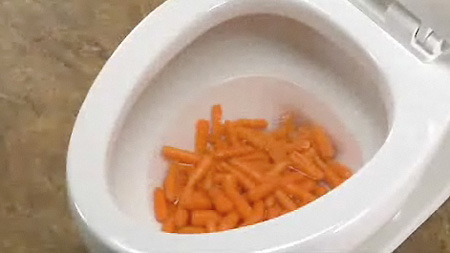Can You to Flush Food Down the Toilet?
See AvailabilityEach person has his or her own assumption in relation to Flushing Food Down the Toilet?.

Intro
Many individuals are typically confronted with the dilemma of what to do with food waste, specifically when it concerns leftovers or scraps. One usual concern that occurs is whether it's alright to purge food down the bathroom. In this article, we'll look into the reasons individuals might take into consideration flushing food, the repercussions of doing so, and different techniques for correct disposal.
Reasons people could consider flushing food
Lack of recognition
Some people might not be aware of the potential harm caused by flushing food down the toilet. They might mistakenly think that it's a safe method.
Ease
Flushing food down the toilet might seem like a fast and easy solution to taking care of unwanted scraps, specifically when there's no close-by trash bin readily available.
Negligence
In many cases, people might just choose to flush food out of large negligence, without thinking about the repercussions of their activities.
Effects of flushing food down the toilet
Ecological impact
Food waste that ends up in waterways can contribute to contamination and injury marine ecosystems. Additionally, the water used to flush food can strain water resources.
Pipes issues
Purging food can bring about clogged pipes and drains pipes, triggering costly plumbing repairs and inconveniences.
Sorts of food that should not be purged
Coarse foods
Foods with fibrous appearances such as celery or corn husks can get entangled in pipes and trigger blockages.
Starchy foods
Starchy foods like pasta and rice can soak up water and swell, resulting in obstructions in pipes.
Oils and fats
Greasy foods like bacon or cooking oils should never ever be flushed down the toilet as they can strengthen and trigger clogs.
Proper disposal methods for food waste
Using a garbage disposal
For homes geared up with waste disposal unit, food scraps can be ground up and flushed with the plumbing system. Nevertheless, not all foods are suitable for disposal in this way.
Recycling
Specific food packaging products can be reused, reducing waste and reducing ecological effect.
Composting
Composting is an environmentally friendly way to throw away food waste. Organic materials can be composted and used to improve soil for horticulture.
The value of proper waste monitoring
Decreasing ecological harm
Appropriate waste management practices, such as composting and recycling, aid reduce air pollution and preserve natural resources for future generations.
Shielding pipes systems
By staying clear of the practice of flushing food down the toilet, home owners can prevent pricey plumbing repair work and keep the honesty of their plumbing systems.
Conclusion
In conclusion, while it might be tempting to purge food down the bathroom for comfort, it is essential to understand the possible repercussions of this activity. By adopting appropriate waste management practices and disposing of food waste sensibly, people can add to healthier plumbing systems and a cleaner atmosphere for all.
FLUSH FOOD DOWN THE TOILET?
FLUSHING FOOD CAN CAUSE BLOCKED DRAINS IN YOUR HOME
All of the plumbing fixtures in your home are connected to the same sewer pipe outside of your home. This outdoor sewer pipe is responsible for transporting all the wastewater from your home to the Council sewer mains. Even small pieces of food that go down the kitchen sink can cause problems for your sewer. It should therefore be obvious that flushing larger bits of food, such as meat, risks a clog in either the toilet itself or the sewer pipes. Flushing greasy food is even more problematic because oil coagulates when it cools, coating the interior lining of your pipes.
THE TOILET IS NOT A BIN
Food isn’t the only thing that people shouldn’t be flushing down the toilet. People use the toilet to dispose of all kinds of things such as tampons, makeup wipes, dental floss, kitty litter and even underwear. Water goes to great lengths to educate residents about the high costs and stress placed on wastewater treatment systems simply from people flushing the wrong stuff down the toilet. It costs taxpayers millions of dollars each year, and homeowners thousands in blocked drain repairs.
FLUSHING FOOD IS A WASTE OF WATER
Flushing food is a waste of our most precious resource - water. In June this year Level 1 water restrictions were introduced to protect water supply from drought conditions. Much of New South Wales continues to be affected by prolonged drought with recent figures revealing up to 97 per cent of the state remains in drought. Depending on whether you have a single or dual flush toilet, every single flush uses between five and 11 litres of water. In the current climate this is a huge amount of water to be wasting on flushing food that should be placed in the bin (or better yet, the compost).
https://www.jabplumbingsolutions.com.au/blog/can-you-flush-food-down-the-toilet

I'm certainly very serious about Flushing Food Down the Toilet? and I am hoping you liked our article. Are you aware of someone else who is excited about the niche? Please feel free to share it. Thanks so much for your time invested reading it.
Click Here